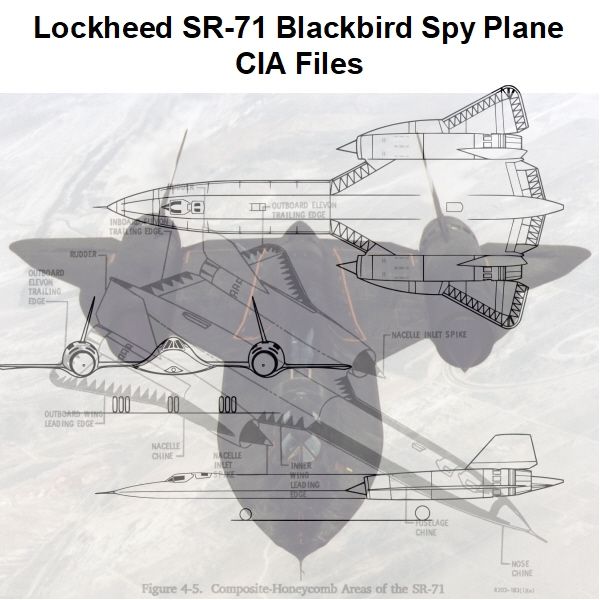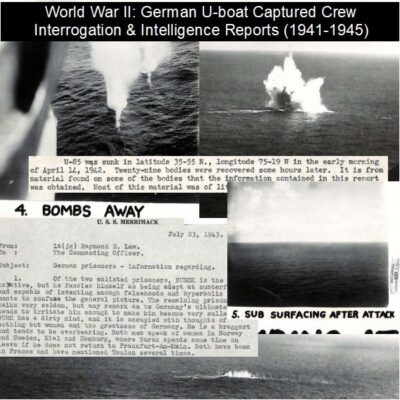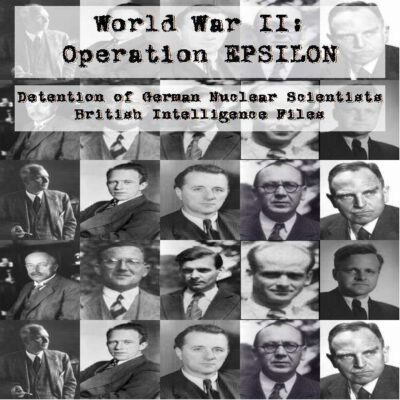
Lockheed SR-71 Blackbird: CIA Spy Plane Files
$19.50
Description
SR-71 Blackbird: A Legacy of Speed and Espionage
- Early 1960s: The CIA, which oversaw the development of the A-12 Oxcart, sets up shell companies abroad to purchase titanium from the Soviet Union for the construction of the SR-71 Blackbird.
- 1963: CIA files begin documenting the inception and use of the SR-71.
- 1964: Test flights for the SR-71 Blackbird begin.
- 1968: The first operational flight of the SR-71 Blackbird takes place.
- 1973: The SR-71 provides intelligence during the Yom Kippur War.
- July 28, 1976: Maj. Gen. Eldon Joersz (pilot) and Lt. Col. George Morgan (reconnaissance systems officer) set the world absolute speed record for jet-powered airplanes in an SR-71, achieving 2,193 mph. This record still stands.
- 1982: The SR-71 provides intelligence during the Israeli invasion of Lebanon.
- 1986: The SR-71 provides intelligence regarding the American air forces raid on Libya.
- 1987: The SR-71 provides intelligence on Iranian Silkworm missile batteries.
- Spring 1995: The last SR-71 mission is flown.
- 2019: CIA files related to the SR-71 continue up to this year, covering its inception and use.
Cast of Characters
- Clarence “Kelly” Johnson: American aerospace engineer responsible for many of the innovative design concepts of the SR-71 Blackbird. He was a key figure in Lockheed Aircraft Corporation’s clandestine “Skunk Works” division.
- Maj. Gen. Eldon Joersz: SR-71 pilot who, on July 28, 1976, set the world absolute speed record for jet-powered airplanes at 2,193 mph.
- Lt. Col. George Morgan: Reconnaissance Systems Officer (RSO) who, on July 28, 1976, set the world absolute speed record for jet-powered airplanes at 2,193 mph, alongside Major General Eldon Joersz.
- Lt Col Jerry O’Malley: An SR-71 pilot, mentioned in the Department of Defense materials as having a biography included in the files. (No specific details about his life or achievements are provided in the source excerpt beyond his role).
SR-71 Blackbird: CIA Spy Plane Documents
Documents related to the Lockheed SR-71 Blackbird reconnaissance aircraft from the CIA.
This collection includes over two thousand pages of Central Intelligence Agency documents alongside more than one thousand pages of reports from the Department of Defense. The SR-71 surveillance plane held the title of the fastest jet-powered aircraft globally and represented the pinnacle of the Blackbird series, a creation of Lockheed Aircraft Corporation’s secret “Skunk Works” unit. The Smithsonian Air and Space Museum, showcasing an SR-71 prominently at its Steven F. Udvar-Hazy Center, states that this aircraft was engineered for penetrating far into enemy zones, evading detection through its exceptional velocity and elevated flight ceiling. Numerous groundbreaking ideas incorporated into the design stemmed from the work of American aerospace engineer Clarence “Kelly” Johnson. Its aerodynamic configuration inherently reduced its visibility on radar.
Furthermore, its surface featured a special coating infused with ferrite particles, engineered to absorb radar signals. The SR-71’s construction primarily utilized titanium, chosen for its resilience to high temperatures and its minimal weight. Securing this metal in the early 1960s proved challenging. Paradoxically, one of the prime suppliers was the Soviet Union, leading the CIA—which had also managed the development of the SR-71’s precursor, the A-12 Oxcart—to establish front companies in other countries to acquire the necessary material from the very adversary it was monitoring.
Propulsion for the SR-71 came from a pair of Pratt & Whitney J58 (JT11D-20) axial-flow turbojet engines. The J58 represented a significant engineering advancement for its time, generating a static thrust of 32,500 pounds-force (145 kilonewtons). Its optimal performance occurred at approximately Mach 3.2, which was the Blackbird’s standard operational velocity. Initial test flights commenced in 1964, with its inaugural mission occurring four years later, in 1968. Production amounted to 32 units; remarkably, none were downed by hostile forces, although 12 were lost due to mishaps. This aircraft was capable of reaching speeds up to Mach 3.3, exceeding the pace of a firearm’s projectile, and flew at altitudes exceeding sixteen miles above the planet’s surface while maintaining safety.
A global speed record for jet-propelled aircraft was established on July 28, 1976, when pilot Maj. Gen. Eldon Joersz and reconnaissance systems officer (RSO) Lt. Col. George Morgan achieved a blistering speed of 2,193 miles per hour. This achievement remains unsurpassed to this day. Throughout its service period, the SR-71 gathered vital information concerning various conflicts and events, including Southeast Asia during the Vietnam War, the 1973 Yom Kippur War, the Israeli incursion into Lebanon in 1982, the 1986 U.S. air strike on Libya, and Iranian Silkworm missile installations in 1987. The upkeep and operation of the SR-71 entailed significant financial costs. Constantly advancing satellite surveillance systems posed a growing challenge to its role in reconnaissance. Furthermore, it faced competition for scarce budgetary resources from other costly defense initiatives, like the B-2 bomber. The final operational flight of the SR-71 took place in the spring of 1995.
These 2,039 pages of CIA documents span from 1963 to 2019, detailing the genesis and operational history of the SR-71. The content encompasses details on Groom Lake (Area 51), a base of operations for the SR-71; disputes regarding the aircraft’s financing; its evolution and implementation; records of incidents; the retirement of the A-12; and data pertaining to BLACK SHIELD reconnaissance sorties flown over North Vietnam.Documents from the Defense Department
This extensive compilation spans 1,009 pages of material sourced from the Department of Defense, detailing aspects such as high-altitude radiation exposure in the SR-7 aircraft; the historical growth of the Strategic Air Command; specifics concerning sonic booms; a biographical account of SR-71 pilot Lieutenant Colonel Jerry O’Malley; and proposals for an uncrewed iteration of the SR-71, complemented by insights into ramjet intake engine technology.











Related products
-

World War II: German U-boat Captured Crew Interrogation & Intelligence Reports (1941-1945)
$19.50 Add to Cart -

World War II: Operation EPSILON Detention of German Nuclear Scientists British Intelligence Files
$19.50 Add to Cart -

Soviet Union Top Secret Military Journal Voyennaya Mysl
$19.50 Add to Cart -

Sidney George Reilly – “Reilly Ace of Spies” MI5 British Intelligence & Royal Air Force Files
$19.50 Add to Cart